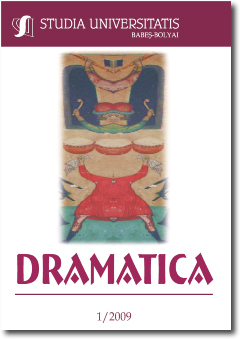LE THÉÂTRE VU A TRAVERS LES ARTS PICTURAUX. INTRODUCTION A L’ANALYSE DE L’IMAGE COMME SOURCE POUR L’HISTOIRE DU THÉÂTRE.
THEATRE SEEN THROUGH PICTORIAL ARTS. AN INTRODUCTION TO THE ANALYSIS OF IMAGES AS A SOURCE FOR THEATRE HISTORY.
Author(s): Nuria AragonèsSubject(s): Theatre, Dance, Performing Arts
Published by: Studia Universitatis Babes-Bolyai
Keywords: theatre iconography; image; theatre history research.
Summary/Abstract: Theatre seen through pictorial arts. An introduction to the analysis of images as a source for theatre history. Differing from the history of painting, which is based on the physical existence of the studied object, the history of theatre – where the object of study is by definition an ephemeral piece of art – is elaborated by the assembly of documental sources (images and texts) that the theatre historian uses to analyse the missing object. This article focuses on the principal considerations that appear to theatre historians when approaching the analysis of pictorial record. These are the dichotomy between monument and document, which characterize the pictorial image (theory developed by Italian theatre historian Cesare Molinari after Michel Foucault’s postulates). Secondly, theatre historian will distinguish between direct and indirect iconographic sources in order to apply a specific methodology depending on each case. Significance and testimonial value of the pictorial record are two other important issues to consider when examining iconographic sources. Which part of the pictorial representation concerns the subjectivity of the painter or the conventions of pictorial art and which part can be interpreted as historical data concerning the theatre? A critical attitude on the consideration of the social and cultural context of the epoch (issues on the production, function and destination of the image) will allow the reinterpretation of known images as well as an interpretation for previously unknown images. Finally, we will consider the technical aspects of images (drawing, engraving) that could have influenced the way on which the theatre performance (subject of the image) is represented. All those aspects converge in the same way of research and participate in the interpretation of images as sources for theatre history.
Journal: Studia Universitatis Babes-Bolyai - Dramatica
- Issue Year: 2009
- Issue No: 1
- Page Range: 95-102
- Page Count: 8
- Language: French

